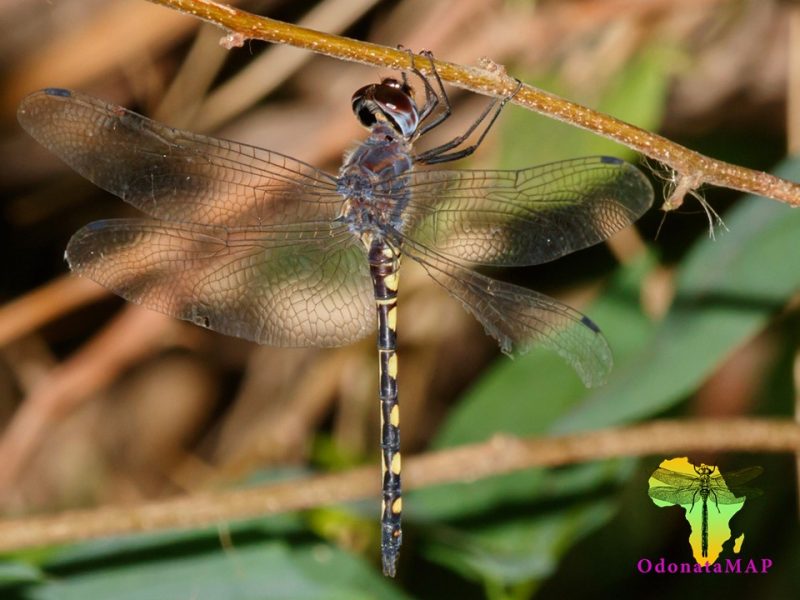Cover photo by John Wilkinson.
Find the Ringed Cascader in the FBIS database (Freshwater Biodiversity Information System) here.
Family Libellulidae
Identification

Tswaing Nature Reserve, Gauteng
Photo by Gerhard Diedericks
Large size
Length up to 61mm; Wingspan attains 102mm.
The sexes are alike.
The Ringed Cascader is most similar to Zygonoides fuelleborni, the Southern Riverking. The two have similarly coloured and patterned abdomens. However, Zygonoides fuelleborni has blue rather than black eyes and a bulbous basal segment on the abdomen. The two species also display very different behaviour, making them easy to separate.
The Ringed Cascader could also be mistaken for a female Blue Cascader Zygonyx natalensis but that species shows far less yellow on the abdomen.
Click here for more details on identification.
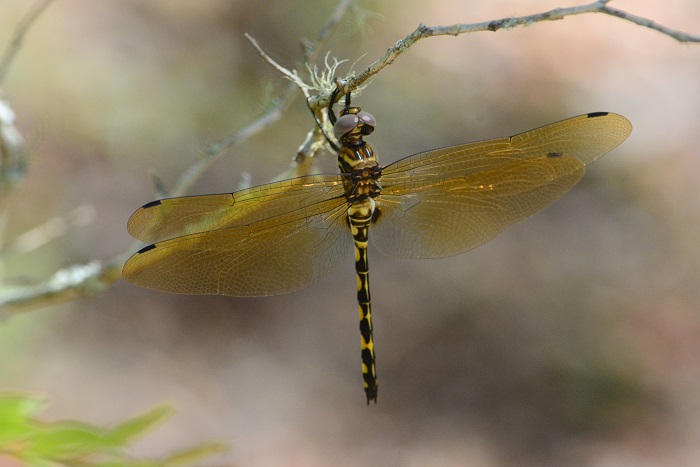
Kosi Bay, iSimangaliso Wetland Park, KwaZulu-Natal
Photo by Ryan Tippett
Habitat
Their preferred habitat is that of rivers and streams in both open and wooded landscapes. The Ringed Cascader favours fast-flowing waters but also hunts over nearby still sections. The Ringed Cascader is most regular along rocky stretches of river, but is not limited by this. Individuals may sometimes be found far from water in the surrounding habitat.
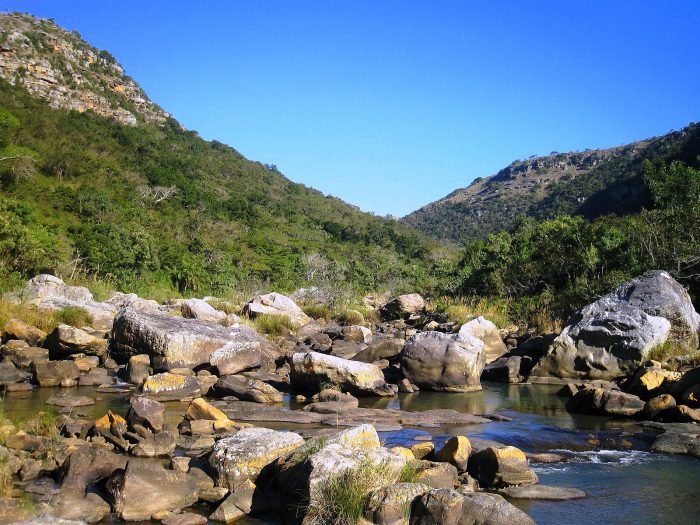
Photo by Ryan Tippett
Behaviour
The Ringed Cascader is a strongly aerial species that spends long periods in flight, coursing up and down a chosen route. They are occasionally seen perched, hanging vertically with the wings outstretched. The Ringed Cascader can often be seen hovering over white water and has a great change of speed as it darts off to snatch prey or to chase off a rival. Females and immatures are regularly found away from water in the surrounding woodlands.
The Ringed Cascader is on the wing from September to May.

Mseleni River, KwaZulu-Natal
Photo by Ryan Tippett
Status and Conservation
The Ringed Cascader is locally common. It is listed as of Least Concern in the IUCN Red List of Threatened Species. Zygonyx torridus makes little use of man-made habitats as it is reliant on flowing rivers. It is, however, a fairly hardy species that can inhabit somewhat degraded rivers provided its habitat requirements are met.
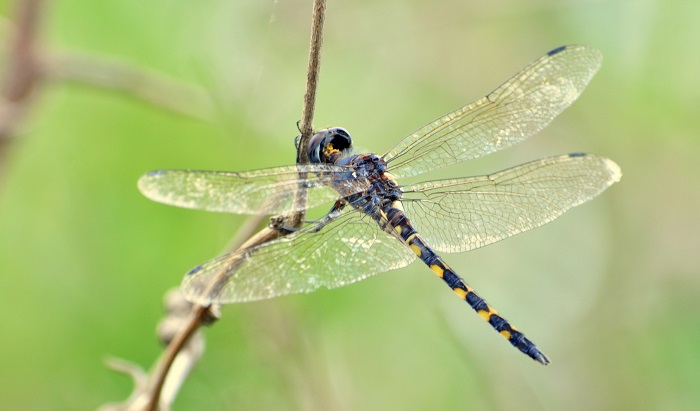
Mkuze Game Reserve, KwaZulu-Natal
Photo by Ryan Tippett
Distribution
The Ringed Cascader is a very widespread species. Zygonyx torridus is found throughout most of Sub-Saharan Africa and also occurs in southern Europe, parts of the Middle East and western Asia.
In Africa it is only absent from the arid and semi-arid regions that lack perennial, flowing rivers and streams.
The South African distribution is mostly confined to the North and East where it is widespread.
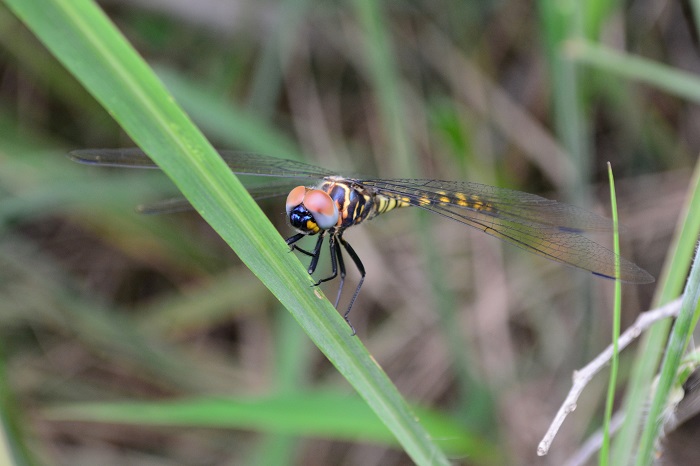
Amakhosi Game Reserve, KwaZulu-Natal
Photo by Ryan Tippett
Below is a map showing the distribution of records for Ringed Cascader in the OdonataMAP database as at February 2020.
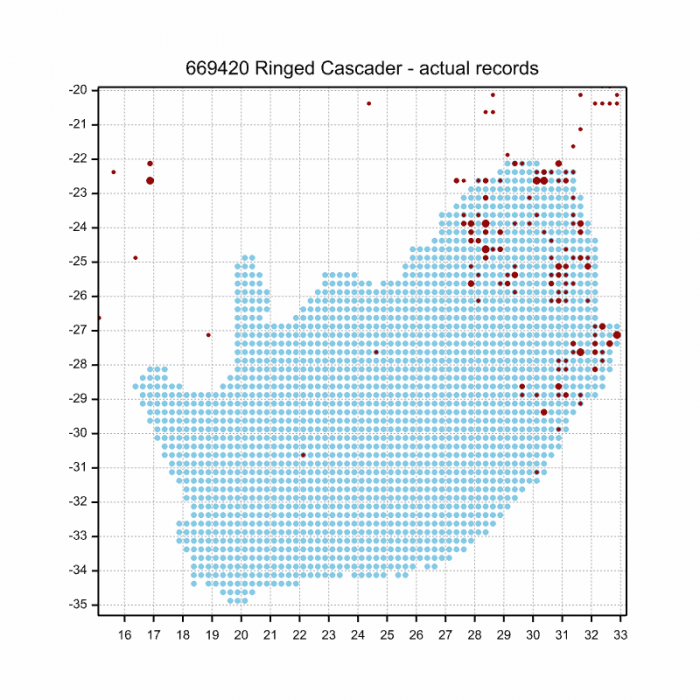
Below is a map showing the distribution of records for Ringed Cascader in the OdonataMAP database as of December 2024.

The next map below is an imputed map, produced by an interpolation algorithm, which attempts to generate a full distribution map from the partial information in the map above. This map will be improved by the submission of records to the OdonataMAP section of the Virtual Museum.
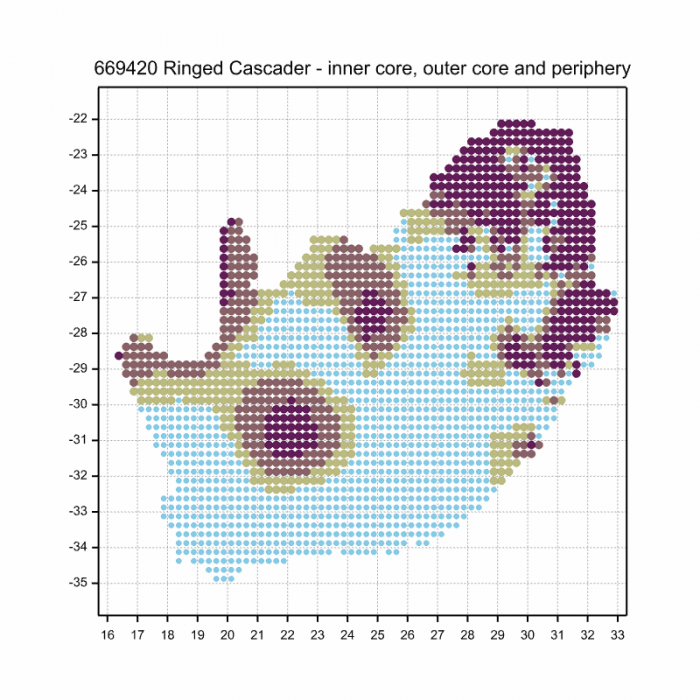
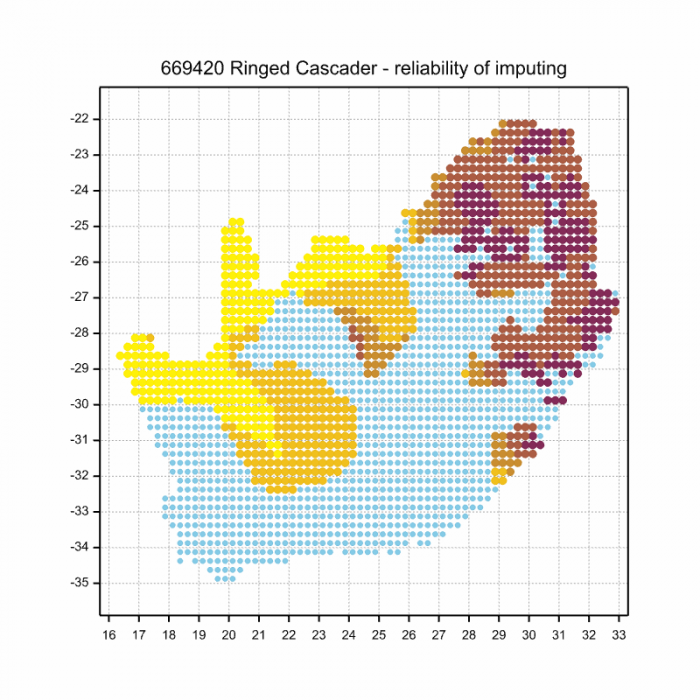
Ultimately we will produce a series of maps for all the odonata species in the region. The current algorithm is a new algorithm. The objective is mainly to produce “smoothed” maps that could go into a field guide for odonata. This basic version of the algorithm (as mapped above) does not make use of “explanatory variables” (e.g. altitude, terrain roughness, presence of freshwater — we will be producing maps that take these variables into account soon). Currently, it only makes use of the OdonataMAP records for the species being mapped, as well as all the other records of all other species. The basic maps are “optimistic” and will generally show ranges to be larger than what they probably are.
These maps use the data in the OdonataMAP section of the Virtual Museum, and also the database assembled by the previous JRS funded project, which was led by Professor Michael Samways and Dr KD Dijkstra.
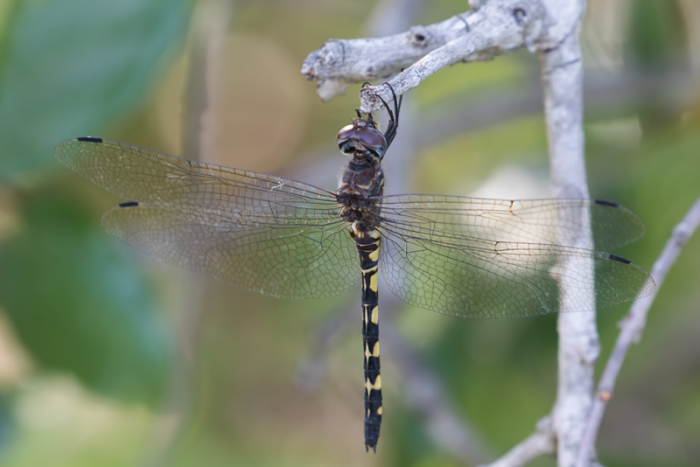
Photo by Gregg Darling
Further Resources
The use of photographs by Gerhard Diedericks, Gregg Darling, and John Wilkinson is acknowledged. All other photographs by Ryan Tippett.
Ringed Cascader Zygonyx torridus (Kirby, 1889)
Other common names: Kringklatertjie (Afrikaans)
Recommended citation format: Loftie-Eaton M; Navarro R; Tippett RM; Underhill L. 2025. Ringed Cascader Zygonyx torridus. Biodiversity and Development Institute. Available online at https://thebdi.org/2020/02/19/ringed-cascader-zygonyx-torridus/
References: Tarboton, M; Tarboton, W. (2019). A Guide to the Dragonflies & Damselflies of South Africa. Struik Nature.
Samways, MJ. (2008). Dragonflies and Damselflies of South Africa. Pensoft
Samways, MJ. (2016). Manual of Freshwater Assessment for South Africa: Dragonfly Biotic Index. Suricata 2. South African National Biodiversity Institute, Pretoria
Martens, A; Suhling, F. (2007). Dragonflies and Damselflies of Namibia. Gamsberg Macmillan.

Kosi Bay, iSimangaliso Wetland Park, KwaZulu-Natal
Photo by Ryan Tippett

